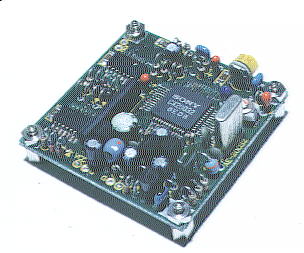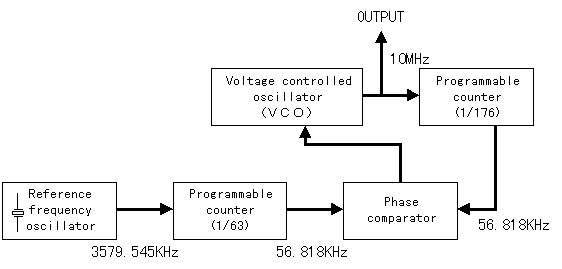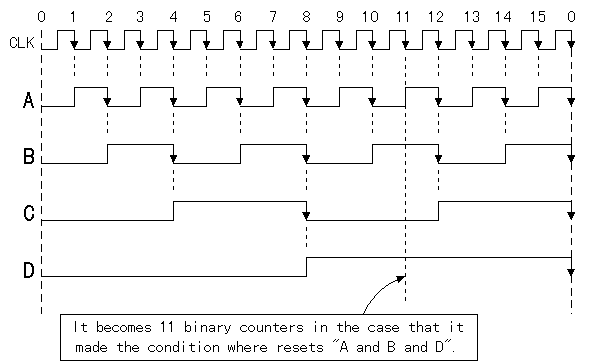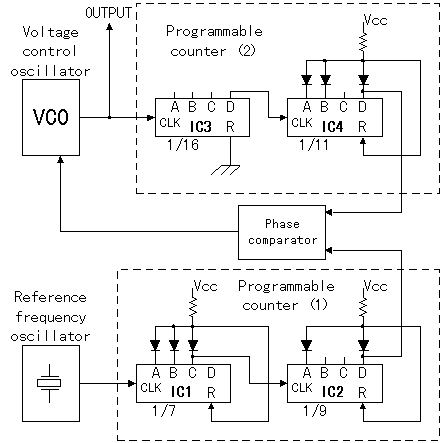PLL oscillator
[Menu]>[Application]>[Ultra High Accuracy Digital Clock]>[Production]


| Reference frequency oscillator | The high stability oscillator like a crystal oscillator etc. are used. |
| Voltage controlled oscillator ( VCO ) | This is the oscillator that frequency changes by voltage control. |
| Phase comparator |
The comparative difference between reference oscillation frequency and output frequency is detected. In the case that there is a difference the control voltage is output. In the case that the output frequency is high the voltage that lowers frequency to VCO is output. |
| Programmable counter |
Dividing output frequency comparative frequency is made. Output frequency can be changed by changing the counting value. |


 Action of the programmable counter
Action of the programmable counter

 The circuit drawing of the right is the one that wrote the part of the programmable counter in detail.
The circuit drawing of the right is the one that wrote the part of the programmable counter in detail.